In the heart of Germany
Medieval towns, imperial castles, mountain scenery, echoes of a darker past... all this and much more we found in the relatively small Harz Mountains region of Germany, where we stayed for two weeks in the summer.
The area is full of historical curiosities and even contradictions. A plaque at one end of a Communist-era reservoir dam urges visitors to remember and thank its socialist builders, but today's tourists are far more interested in the adjoining cable-stayed footbridge from which thrillseekers go bungee jumping.
Once the source of ancient legends, the rocky plateau of the Hexentanzplatz ("Witches' dancing place") is still inhabited by wolves and wild boar, but these are securely housed in a Tierpark along with deer, owls and many other native species. The neighbouring, very tough minigolf course did pose quite a challenge though. On another day we took the cable car from the town far below, and also walked along part of the river gorge which cuts deeply through the mountains.
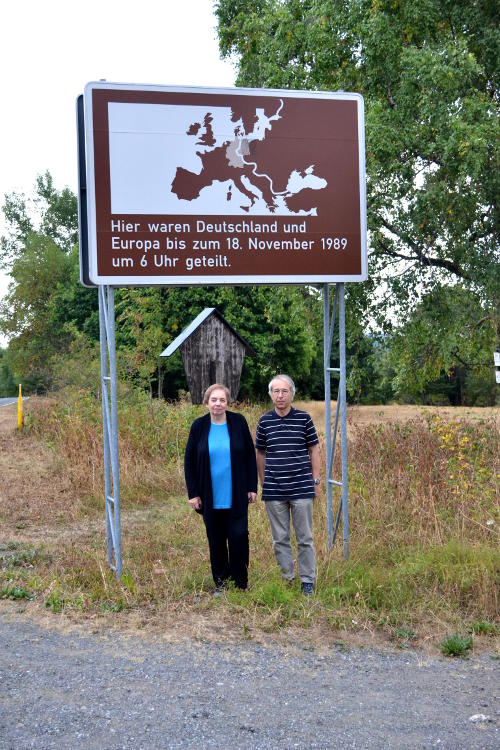
Standing on the line of the former Iron Curtain: this sign stands on what is now a quiet country road
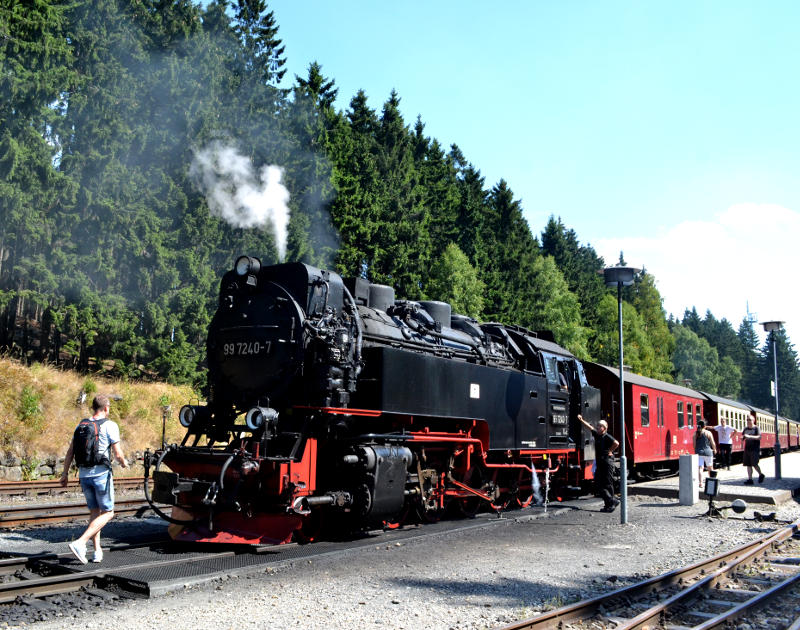
Passengers admire the steam engine on the Brockenbahn
Although we are not great railway enthusiasts the Brockenbahn steam railway which puffed laboriously through the forest to the highest point in northern Germany was a "must travel". The summit was once a protected military zone, used by the former Communist government to listen in on the West. On another day we walked through an open air museum where relics of the Iron Curtain - watchtowers, barbed wire and other military installations - are preserved as a memorial to the barrier which divided Germany for 40 years, and to those who died trying to cross it.
One of our first destinations was the restored medieval town of Wernigerode where a contemporary (and somehow appropriate) music festival was taking place in the main square. In baking hot weather we climbed a hill to visit the castle which contains many relics of the imperial age, including a bust of Kaiser Wilhelm II - a reminder that this was once the heartland of the Prussian empire. The town of Quedlinburg is similarly full of beautiful buildings, but an old photo revealed that just 20 years ago it was still partly in ruins due to wartime bombing.
Curiosity about a mysterious entry on the map led us through an immaculate village to the former site of a Nazi concentration camp with a memorial to the thousands who died there.
There are more photos from our stay in Germany on this page.
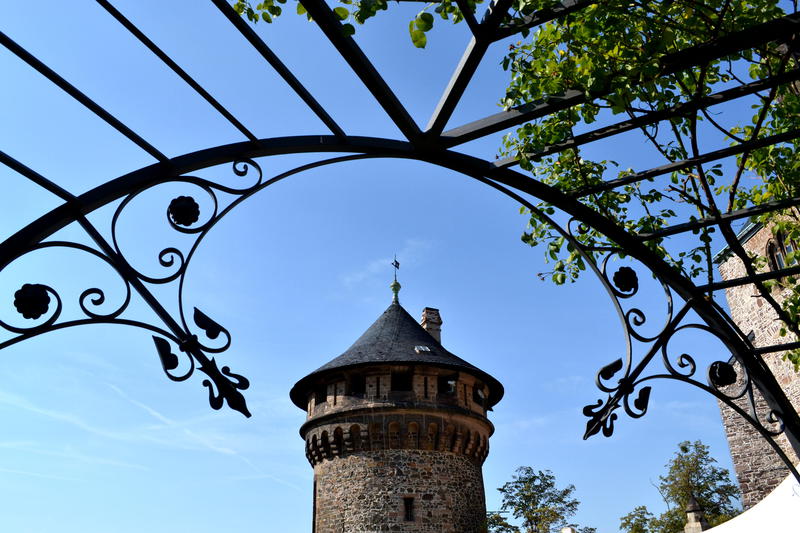
Tower at Schloss Wernigerode
Haven't we had a lot of weather...
Sandwiched between the "Beast from the East" and the hottest summer for decades came a Sunday afternoon when a month's worth of rain fell on our area in just a couple of hours. From behind our domestic flood barriers we watched the water level rise to reach the base of the house, but it did not go quite high enough to put the defences to the test.
Once it was safe to go out I found that lakes had formed in our road and at a major local road junction, but a new flood defence scheme which had been completed only a few months earlier successfully retained the River Rea within its designated channel.
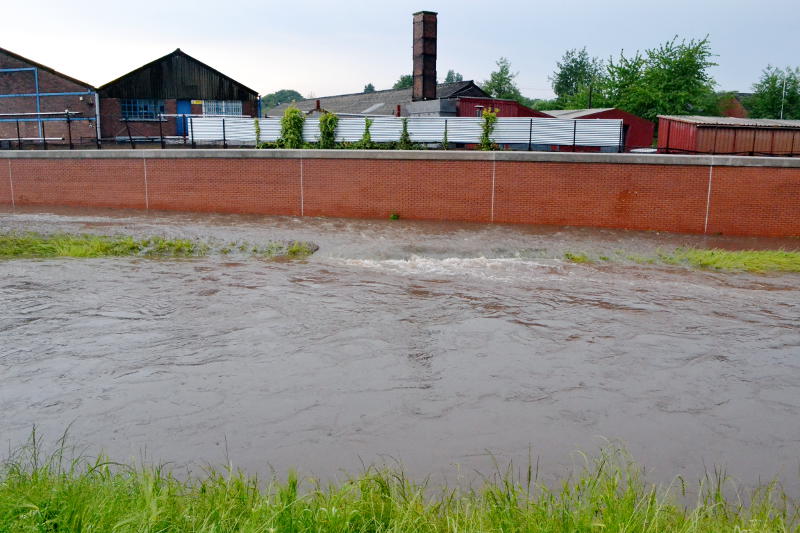
Flood defence scheme at work: the water retained by the far wall would previously have flowed through local houses
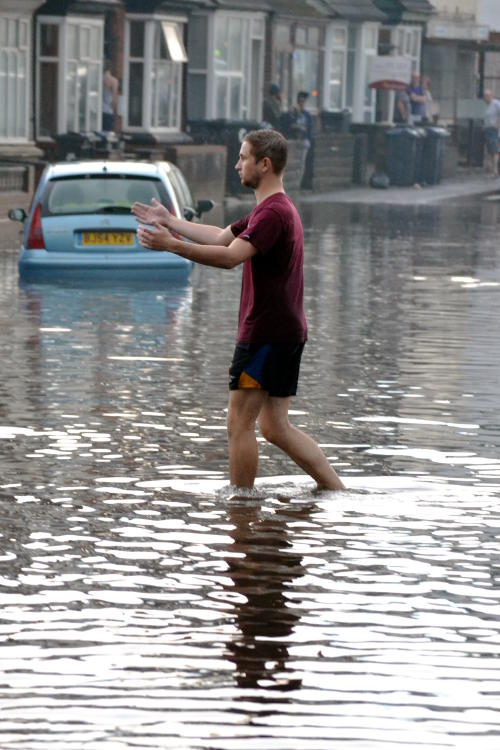
Hero at work: a volunteer helps to direct cars through a flooded road junction
Once the heatwave got under way this was the perfect opportunity to get on my bike and explore the nearby canal which provides a handy, hill-free route all the way from Kings Norton to the city centre and beyond. Some of the views encountered are collected on this page of photos.
Music: Home and away
"In June I decided to present a concert of my favourite piano music - Brahms, Chopin, Bach. I invited some guest players - John, Dave and Elsie - and we all joined in a final piece that I had composed myself. It was a very hot but enjoyable afternoon, with an audience of about 30." - Miriam
The following month, we spent a long weekend in York on tour with Miriam's choir, the Phoenix Singers. They gave concerts in Beverley Minster, in a church in the centre of York and, the most unlikely venue, in an aircraft hangar - at the Yorkshire Air Museum.
"The Phoenix Singers spring concert included the English première of a Karl Jenkins work, Dewi Sant (St David), with massed choirs in Birmingham's Symphony Hall. The summer concert was a “round the world” trip with music from all continents. That was interesting and challenging, and I'm looking forward to next year, when we're planning to perform the whole of the Mozart Requiem."
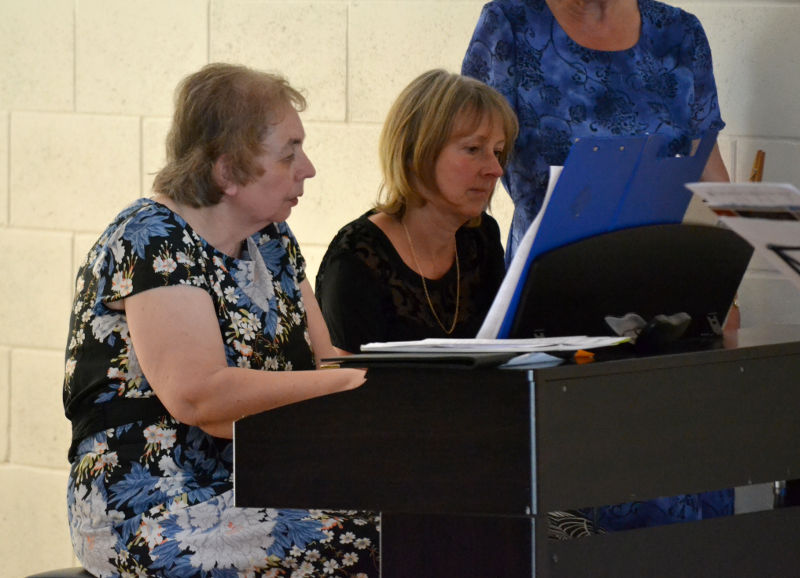
Miriam performing at her concert in Christ Church
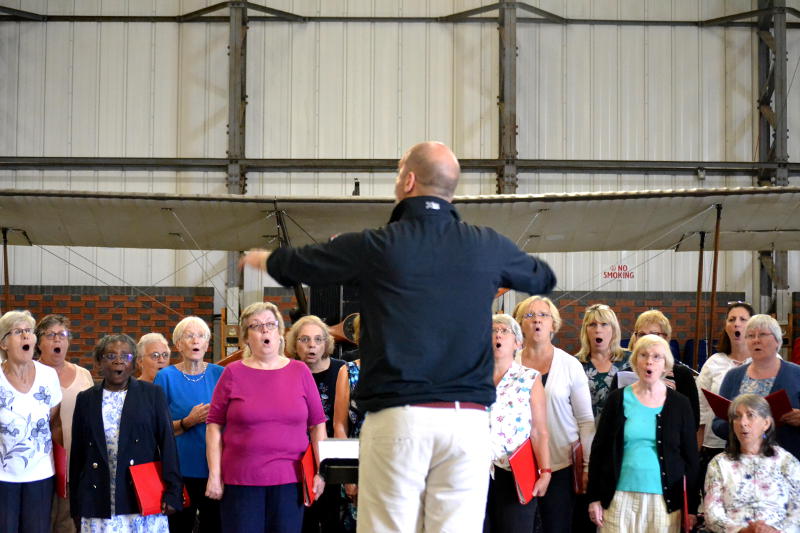
On wings of song with Phoenix Singers at the Yorkshire Air Museum
Communicating church
Looking after Christ Church's online presence is an unusual task in that it can be done from anywhere and at any time. Not so the Friday morning paper chase as the weekly notice sheet is edited and printed, an activity fortified by tea and teacakes provided by Coffee Mates which Miriam is running in the nearby hall. Miriam also helps at the weekly Lunch Club for older people, and I take a lot of photos at events - especially the monthly Messy Church which provides an alternative way for people to express their faith and be creative.
A long wished for dream became reality with the installation of solar panels on the roof of the building in October. This is one of many items of good news - the literal meaning of the word "gospel" - we have been able to report on through the year. The best news, though, is not changed buildings but changed lives!
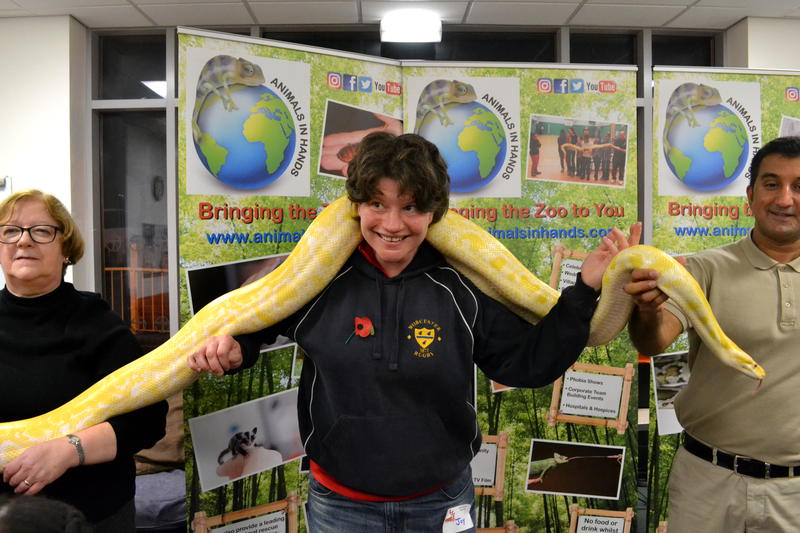
Possibly the longest ever visitor to Christ Church... this 4 metre long constrictor snake was a special guest at November Messy Church
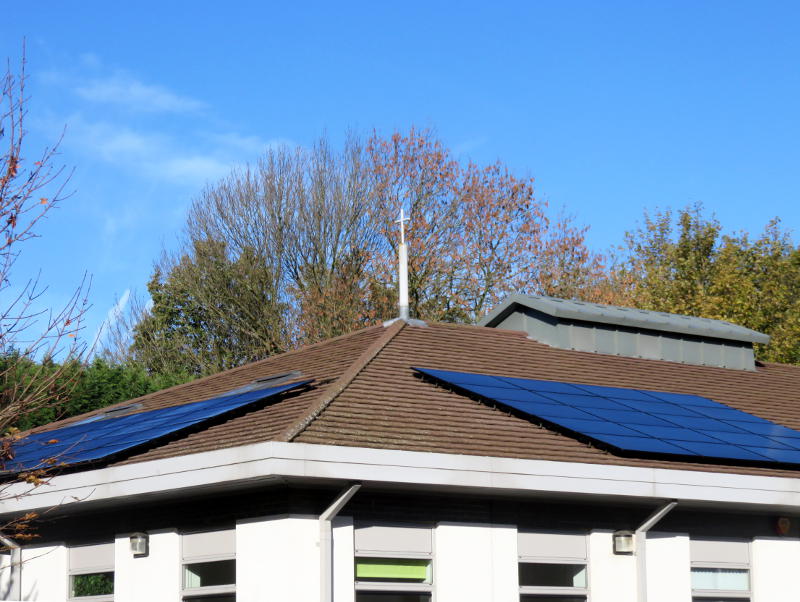
Solar panels on the roof of the Christ Church building: the array can generate up to 20 kilowatts
Stirchley stitching
Miriam took part in the Big Stitch, a community project based at Stirchley Baths to which over 100 people contributed. The design of the tapestry was based on that of a mural which hid some unsightly scaffolding in the final days of the old swimming pool.
"After 8 months' work the Big Reveal was performed in March. The regular stitchers, including myself, were invited to unveil the finished piece, which is now permanently displayed in the building. The Stitch Club continues to meet fortnightly and after making a banner has embarked on patchwork projects." - Miriam
The heritage of the Baths is celebrated in other ways, not least the tours in which we take visitors underground into the old pool and tunnels. In addition to acting as a tour guide I have given talks about the Baths at other venues. Martin has also contributed by very patiently scanning in historic documents and photos to help form a digital archive.
Our local area continues to develop, with new shops and community projects starting up and growing all the time. I stood as a candidate in the newly-created ward of Stirchley when the electoral map of Birmingham was redrawn, and though tragically few people took the opportunity to vote for me the election helped to focus attention on local issues.
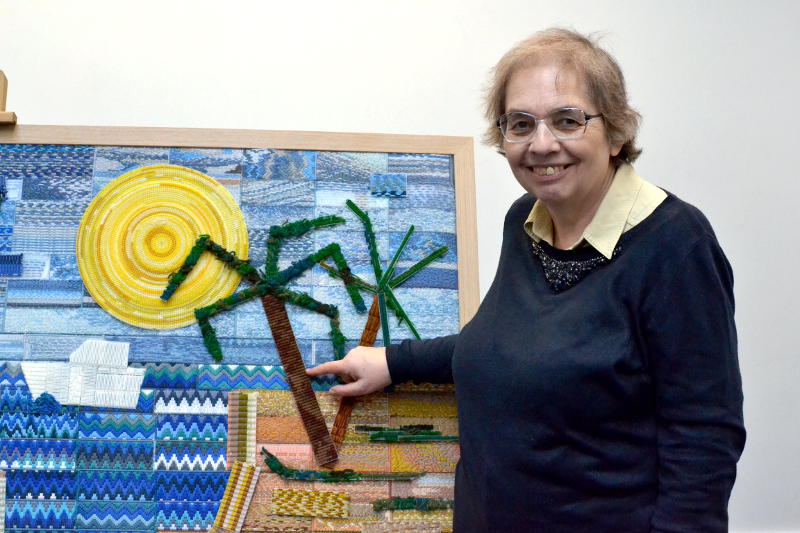
Miriam points to one of her sections of the Big Stitch tapestry
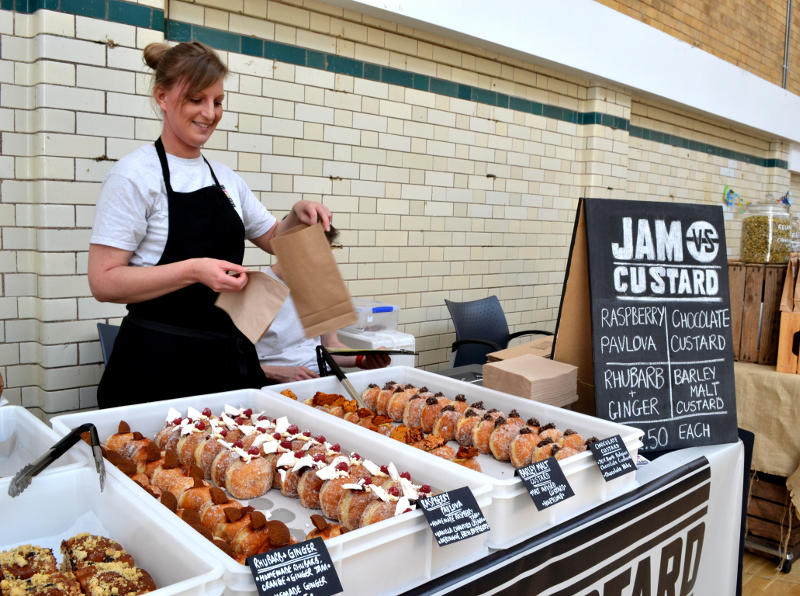
At the monthly Stirchley Community Market I combine the roles of steward, photographer and, especially when it comes to doughnuts, customer
A few photos...
There are many more taken throughout the year on our Photos 2018 page and my Instagram account.
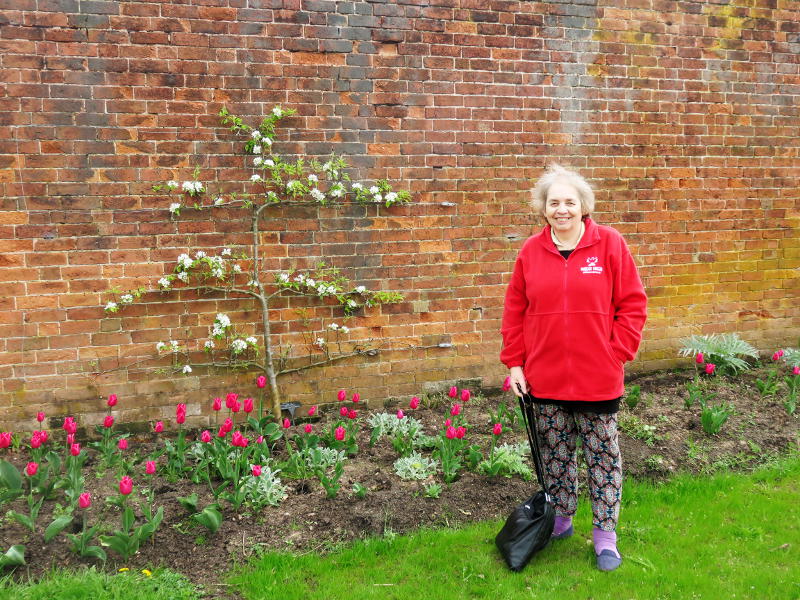
Miriam in the kitchen garden at Shugborough: the vast estate includes a river and railway line as well as the farm estate and massive house. The original building was financed by silver looted from the Spaniards, who had themselves looted it from South America
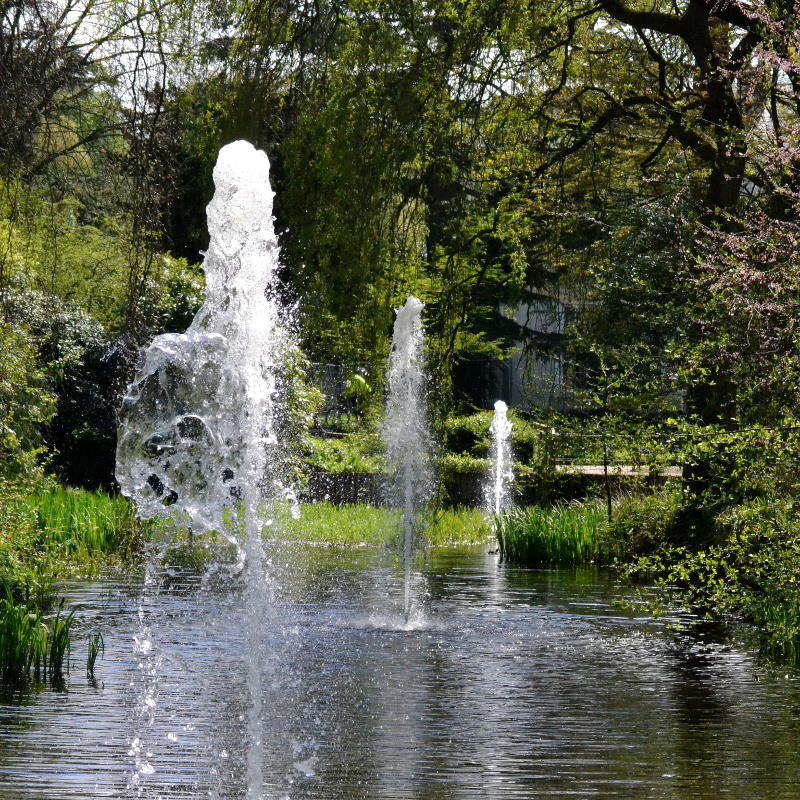
Fountains in Kings Heath Park, "frozen" by a fast shutter speed: the tearoom in the park is the venue for Kings Heath Spanish Club
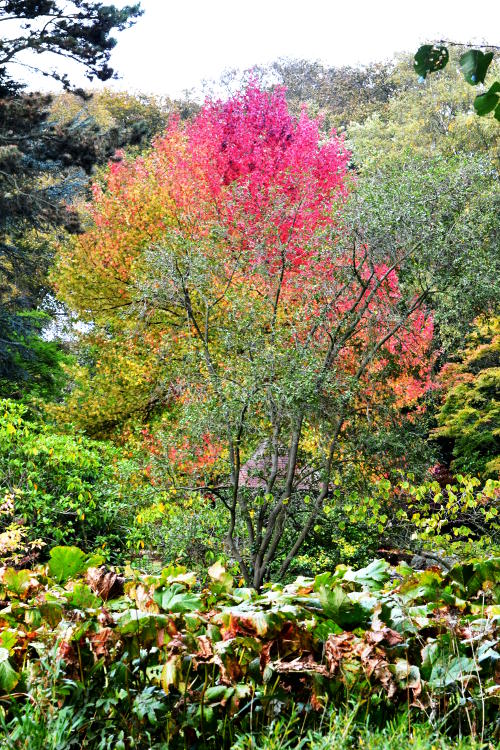
Autumn colours at Winterbourne, a fine local house owned by the University of Birmingham
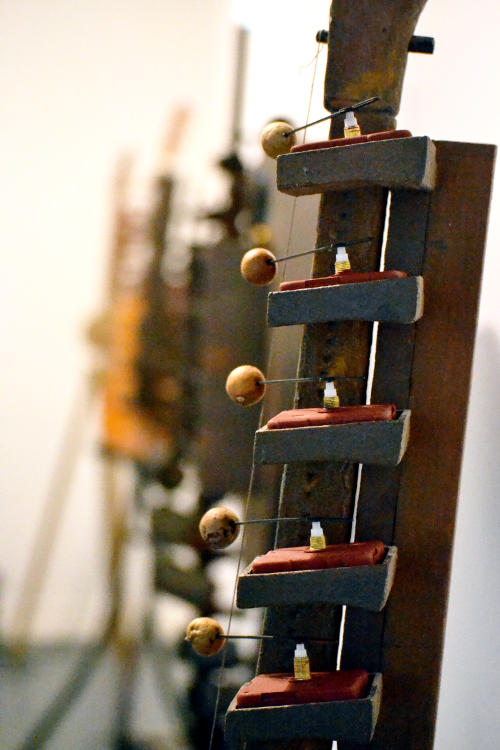
The battery-powered Oak Apple Orchestra was one of many installations to feature at Artefact Café during the year: it continues to be a favourite meeting place, especially for the fortnightly Crunch creative writing group